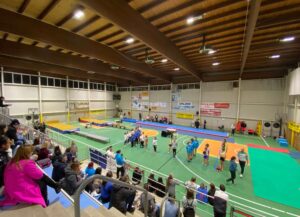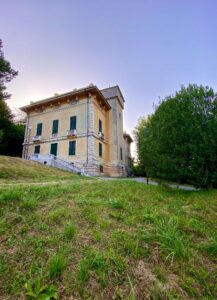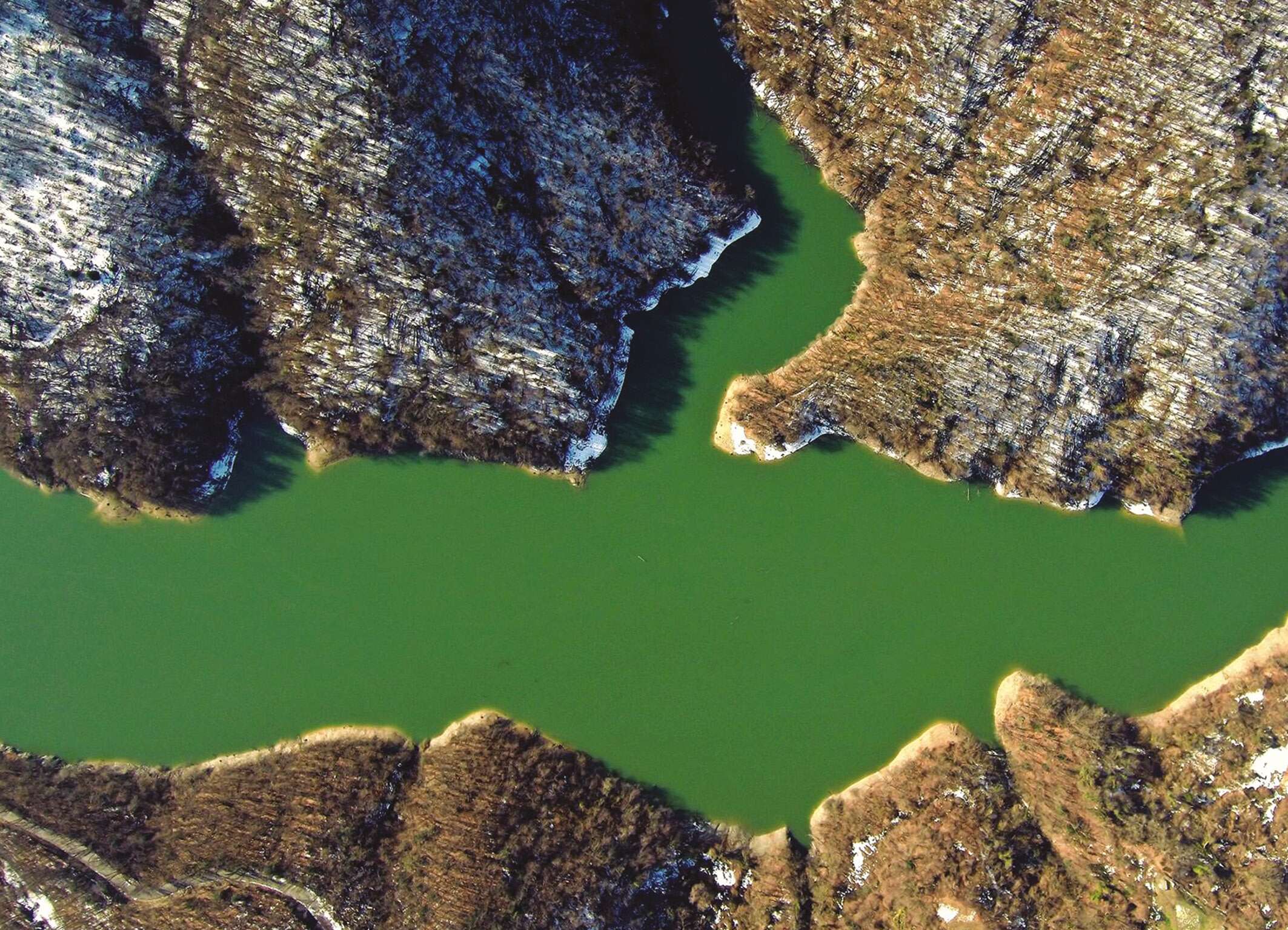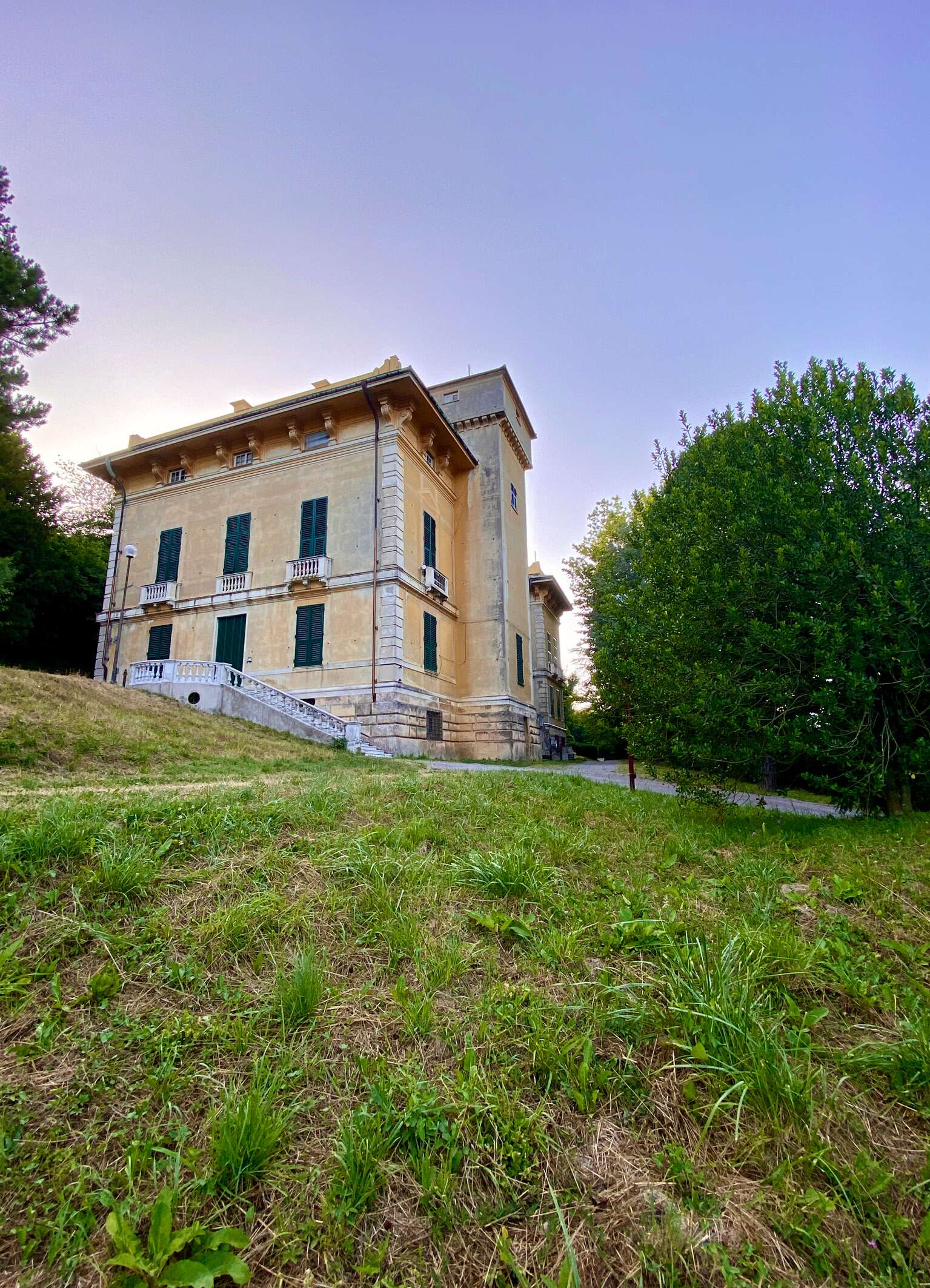Busalla, a village built on the Via Postumia, a possession of the bishop of Tortona, is mentioned for the first time in 1192. Around the middle of the thirteenth century, the Spinola family, a powerful Genoese Ghibelline family, took possession of it. Unlike other Spinola fiefdoms in the Scrivia Valley, Busalla was governed in condominium by numerous members of the Luccoli branch (to which were added, in 1565, by inheritance, the Adorno and Fieschi branches), who obtained, starting from the 13th century, numerous imperial investitures, which became a regular occurance from the sixteenth century. The fiefdom was governed (according to the Statutes of 1609) by a podestà, appointed by the consignori, assisted by a Fiscal Procurator as well as by a Castellan, while the administration of the community was the responsibility of Consuls designated by the Lords. In 1728, it was purchased by the Republic of Genoa for 60,000 lire, subsequently obtaining its investiture from Emperor Charles VI in 1737, although part of the rights remained with the Adornos (Botta-Adorno) of Pavia. It then became the seat of a Commissioner of the Civil Order, with jurisdiction in civil and criminal matters. With the reform of 1798, once feudal rights had lapsed, it constituted a Canton of the Jurisdiction of the Western Ligurian Mountains, created following the union of the Ligurian Republic with the former imperial fiefdoms of the Scrivia and Borbera valleys. In 1802, it was united with the Canton of Ronco, in the jurisdiction of Lemmo (Novi), whose fate it followed under subsequent French domination, when it was part of the district of Novi, in the department of Genoa. In 1815, with the annexation of Liguria to the Savoy Kingdom, it became part of the province of Novi.






What to see in Busalla
The church of San Giorgio is the oldest religious building in Busalla, its presence being documented as early as 966 with attestation of its dependence on the monastery of Chiusa di San Michele, near Turin. At that time, in the municipal territory there was already a church, also dedicated to Saint Giorno, in the hamlet of Sarissola, founded by the monks of San Colombano di Bobbio, between the 9th and 10th centuries, as a dependency of the Precipiano Abbey, remembered by Celestino III in a Papal Bull of 1196.
The origins of the current church date back to the end of the 16th century. After long controversies between the Tortona and Genoese clergy, in 1615 it passed under the Archdiocese of Genoa and a papal bull from Pope Paul V, dated 1620, sanctioned the appointment of the first parish priest, Vincenzo Ricci of Sarzana. The building, with three naves, was enlarged between 1828 and 1829 and then again in 1903. In the second span of the right nave, there is the painting “The Madonna Appearing to San Gaetano” by Pietro Raimondi, a pupil of the great Genoese painter Domenico Piola. In the left nave Saint John the Baptist, Saint Anthony the Abbot and Mary Magdalene are depicted, works by the Genoese painter and miniaturist Bernardo Castello. In the presbytery it is possible to observe two works by Giovanni Battista Carlone: “Saint Paul and Plotilla” and “the Beheading of Saint Paul”.
The building to the right of the church is located where the Castle once stood.
Adjacent to the parish church, yet with its own independent entrance, there is the Oratory of San Bernardo, dating back to the beginning of the 17th century and home to the Archconfraternity of the same name. Near the building, the remains of two towers have been found which were part of the ancient city walls, the same ones that appear in the coat of arms of the Municipality.
Villa Borzino is a symbolic monument of Busalla. There is an immense park with a woodland structure planted with chestnut trees; noteworthy are some “fabriques” that surround the avenues, including a nymphaeum inspired by that of Villa Sauli in Genoa and a fountain decorated with an original marble satyr mask. The construction of the villa was the work of the architect Giuseppe Crosa di Vergagni who, in 1919, designed it on behalf of the Honorable Emilio Borzino, an eminent Genoese personality, according to the taste of late sixteenth-century villas with an Alessian imprint.
The villa, which was purchased by the Municipality in 1972, stands on three levels in addition to the basement, has a double entrance, the downstream one of which is preceded by a monumental marble staircase, illuminated by large windows. The interiors are decorated with elegant mirrors and rich stucco motifs on the walls and ceiling. All the floors are in “Genoese” grit with geometric and floral motifs, with the exception of the entrance to the stairwell, elegantly decorated with slate slabs and marble inlays. Finally, the skilful creation of telescopic views, in particular along the axis of the stairwell, with the typical succession of rooms offered to the visitor in a single view, restores the image of grandeur and splendour, in accordance with the ancient tradition of noble palaces.
The Sanctuary, dedicated to the cult of Marian, is linked to the discovery of a statuette of the Madonna della Misericordia, in stone, in a crack in the Puddinga cliff, and to the subsequent apparition of the Madonna to two priests in 1922. The building, resulting from the expansion of the previous chapel erected around 1660, is equipped with an elegant bell tower. The primitive country chapel was then enlarged twice during the 18th century, and the statuette was placed inside. The church of Bastia, of very simple lines, is preceded by an atrium, surmounted by an aedicule where the ancient statuette of the Madonna della Misericordia is displayed to pilgrims. Inside, in a shrine under the main altar, there is a cradle with the statue of the Madonna Bambina, donated by the bishop of Bobbio, Monsignor Zuccarino. In a niche in the cliff, in front of the Sanctuary, excavated in 1946, there is a large marble statue of the Madonna, created by the Genoese sculptor Giovanni Battista Airaldi.




































































































